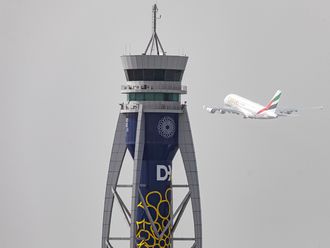Launceston, Australia: There’s no doubt that gold has been boosted by the latest round of US quantitative easing, but the question remains as to whether this is the start of a sustained rally or just a flash in the pan.
Certainly, there is no shortage of gold bulls saying the precious metal is once again poised for significant gains. Their argument is centred on gold’s investment appeal being burnished by monetary debasement in the United States and Europe, coupled with fears of inflation in years to come.
Add to this the possibility of increased demand from top consumers India and China as their respective festive seasons get under way in the fourth quarter and the case for gold looks quite constructive.
However, gold’s gains since the US Federal Reserve announced its third round of quantitative easing, or QE III, have been somewhat muted.
Spot gold has risen just under 2 per cent from its close prior to the September 13 announcement, but is up 9.3 per cent from the end of July, around the time that QE III became more of a likelihood.
But gold is still more than 8 per cent shy of its record high of $1,920.30 (Dh7,052) an ounce, reached on September 6 last year.
While a return to the all-time peak can’t be ruled out, it’s hard to see how it can alone be achieved on the back of quantitative easing in the United States and the bond-purchase guarantee offered by the European Central Bank (ECB).
For gold to extend its current modest rally into a move beyond $2,000 an ounce, it will more than likely need the support of the physical market and this means more buying by consumers in China and India.
And this is where the biggest question mark must be placed, notwithstanding the likely seasonal gains.
Demand plunges
Gold demand has plunged in India on the back of new taxes, a weaker currency and slower economic growth.
India’s gold demand dropped to 181.3 tonnes in the second quarter, down a massive 38 per cent from a year earlier and 13 per cent from the first quarter, according to data from the World Gold Council.
China is likely to overtake India as the world’s top buyer of the precious metal, but even here, the picture has been mixed as lower inflation eroded some of gold’s investment appeal and, similar to India, consumer demand eased along with economic growth.
China’s demand was 144.9 tonnes in the second quarter, down a huge 43 per cent from the first quarter, and if second-half demand matches the first, it will total about 800 tonnes for the full year, only 29 tonnes more than 2011.
This certainly is not enough to offset the loss of about 184 tonnes of gold demand in India, assuming second-half demand in the South Asian nation matches that of the first half.
Correlation
There is a fairly strong correlation between gold demand and price over the past couple of years, once seasonality is taken into account, but this has broken down significantly since the beginning of the year.
Using quarter-end gold prices and demand figures from the World Gold Council shows that the demand/price ratio was 1.29 at the end of the third quarter in 2010.
This was more or less steady to the third quarter of 2011, when it stood at 1.33, as gold’s rally was matched by increasing demand.
However, gold demand has now fallen since the third quarter of last year, outpacing the slip in prices since the record high of September 2011.
The ratio of demand to price in the first quarter of 2012 was 1.52 and 1.60 by the end of the second period.
Since the third quarter of 2010, the ratio has averaged 1.39, or 1.34 if the first two quarters of this year are excluded.
For the ratio to return to the average would take an enormous increase in physical gold demand, which is unlikely to have happened in the third quarter or eventuate in the fourth.
Even if third-quarter gold demand this year was the same as the record high achieved in the same period in 2011, the ratio would still be 1.44, using the current gold price.
This is still elevated in historical terms, and the exact ratio is likely to be higher as it’s hard to see a more than 200-tonne leap in gold demand from the second to third quarters this year.
While China’s gold consumption may have gained, given that Hong Kong’s exports to the mainland nearly doubled in July, it’s still unlikely to have recorded the kind of jump needed to bring physical demand back into correlation with the third-quarter price gains.
Physical platform
It’s the same story for India, with imports likely to have improved in the third quarter as the rupee gained strength, but unlikely to be enough to give a physical platform to gold’s rally.
The run-up to last year’s record high in gold was driven by both physical demand and inflation-hedge, or safe-haven demand, as well as central bank buying.
Right now it appears central bank buying remains solid, investment demand has picked up with a 6 per cent gain in holdings by exchange-traded funds since the end of July, but it remains to be seen if Indian and Chinese demand has improved.
If it has, then the case for a gold rally may be complete, but if the third quarter growth in the world’s top two consumers is modest, then gold’s rally will look shaky.












